Invasive species are a bane to any local ecosystem, but they are particularly troublesome in climates which allow tropical species to thrive. Invasive freshwater fish in Florida have been invading canals, lakes, and rivers for decades.
While invasive reptiles like the Green Iguana and the Burmese Python get all the press, invasive fish are just as damaging. Species like Blue Tilapia breed very quickly, much more quickly than the native species, choking them out.
As a game fisherman, this should concern you. These fish flood Florida fresh water sources, creating competition for native fish like Bass and Bluegills, but what’s an angler to do?
How Targeting Invasive Freshwater Fish In Florida Helps
The state has, of course, worked on solutions to the problem of invasive fish with varying degrees of success. This means banning certain species from being imported for the pet trade and farming, but unfortunately, the damage is already done. These fish are already here and breeding at alarming numbers.
Anglers targeting invasive species help to pull breeding fish out of Florida waters and keep them from reproducing. It also allows native species to grow in number if you harvest invasive species instead of native ones, allowing them to reproduce.
Here’s what you can do to help!
Dispatch Invasive Fish When You Catch Them
Familiarize yourself with the Florida Fish and Wildlife invasive species list. If you catch one of these fish when you’re out, don’t release them! Even if they are smaller fish, you should kill any invasive fish that you catch. Cut them up and use them for bait if they are not of eating size.
Opt To Keep Invasive Over Non-Invasive Fish
If you like to eat the fish that you catch, then the good news is that many invasive species are actually good to eat. In fact, if you’d like to help your local ecosystem even more then you could opt to only harvest your invasive catches and release native fish to continue breeding and repopulate Florida’s waters.
These actions alone can do a good deal to help replenish damaged native fish populations, aid the delicate balance in our ecosystems and preserve the sport of game fishing for the generations who come after us. However, you can also deliberately target these invasive fish if you know where to look.
5 Invasive Freshwater Fish In Florida – And How To Target them!
If you’re game to do more, you can try targeting invasive freshwater fish specifically! There are actually some pretty great benefits to the fishermen aside from the fact that you’ll be doing your state a favor by disposing of these pests.
For starters, invasive fish species have no bag limits or regulations. You are free to take home as many of these fish as you want. If you find a good spot where they are breeding then that can mean a lot of tasty, fresh meat in your freezer, and that’s money you don’t have to spend at the grocery store. Here are five non-natives to get you started, but there are more to be aware of.
1.) Blue Tilapia
The troublesome Blue Tilapia quickly established itself in south and central Florida and now you can find them all over the lakes, canals, ponds and rivers there. While the state has made some headway in controlling them by way of introducing another species, the Peacock Bass, the Blue Tilapia is still a problem.
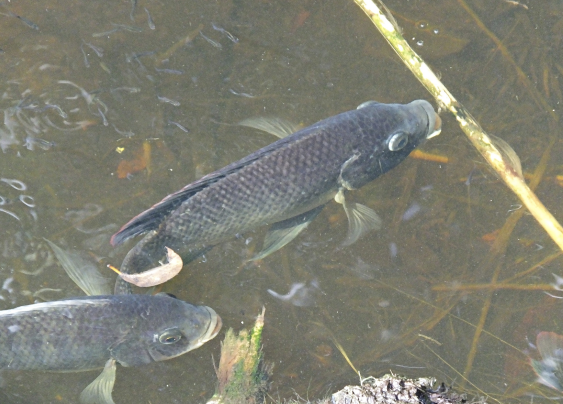
However, for anglers looking to fill their freezers, the Tilapia is a great target. These fish have light, flaky meat, and they grow to a nice fillet size. You’ll generally see them for sale in the seafood department for $6-7/pound. Here’s how to catch Blue Tilapia, help your state, and lower your grocery bill at the same time!
Best Bait For Tilapia Fishing
While a lot of people claim Tilapia are exclusively vegetarian, I have not found that to be the case. I’ve caught a lot of these fish using red worms as bait. I’ve not tried personally, but some people also claim to use bread balls or pieces of corn though if you’d prefer to use something cheaper or easier to find.
However, you can also catch them with lures if you are smart about it. Tilapia are extremely territorial and they will attack anything that enters their spawning bed.
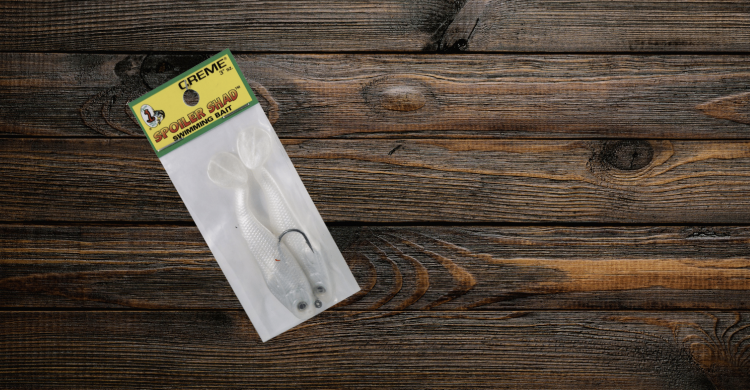
My best success with targeting fat Tilapia has actually come from pulling a swimming shad lure through these spawning nests. The Tilapia guarding the nest attack the lure, you set the hook, and you reel them in.
This will likely work with a number of lures, but you’ll need one that will “swim down” into the nest to annoy them. I’ve found a white lure to work the best, probably because it’s highly visible in the murky waters of Florida canals. I’ve had much less success with other colors, but I suppose luck could also have been a factor.
In any case, this tactic works quite well, but some anglers also like to bow fish for tilapia. While many fish such as bass, crappie, bluegill, and gars are off limits for bow fishing, it’s open season on pesky tilapia – so have at them! Just make sure you can properly identify your target. Bow fishing is heavily regulated for native species.
How To Find Where Blue Tilapia Are Breeding
I admit I stumbled upon my Tilapia fishing spot on accident, but I’ve pulled many large Blue Tilapia from this location. My favorite spot is a little pond area in a small park which is actually attached to the Myakka river. The Tilapia move into the still waters of the shallow pond area to spawn, making it a prime fishing spot for them.
Blue Tilapia seem to spawn readily as long as the temperature is over 68 degrees, and a female Tilapia can spawn every 4-5 weeks. This is part of what makes them so dangerous to Florida waterways but it does provide ample opportunities for you to catch some of these fish on your outings.
2.) Mayan Cichlid
The Mayan Cichlid was first sighted in Florida in the early 80s, but it can now be found all over the southern half of the state. This fish is highly adaptable and thanks to this it has been able to establish itself in a variety of areas from canals to rivers to lakes to marshes, and it’s tolerant of brackish water as well.
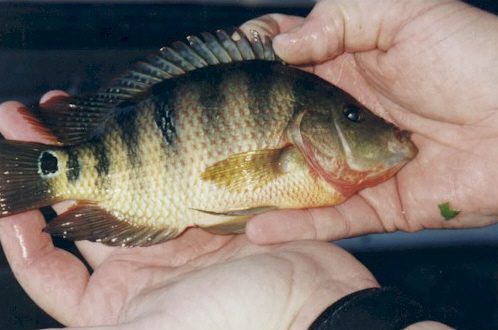
These fish achieve an average weight of around 1.5 pounds, making them of decent eating size. The meat quality is also good and that makes them a great target for filling up your freezer if you’re game to target them. Or, you could also catch them to use as cut bait for more desirable fish.
Best Mayan Cichlid Bait
The Mayan Cichlid is far less picky than the Tilapia. They’re willing to eat a variety of different baits including live worms and crickets, or a variety of artificial lures. If you’d prefer artificial, try jigs, wooly worms, or even popping bugs on light tackle.
These fish will also guard their nests aggressively, so you may be able to catch quite a few using a small swimming shad type lure to bait them into attacking as long as you can set the hook quick enough to pull them out of the water.
How To Find Mayan Cichlids
You’ll likely find these all over in nearly any South or Central Florida canal while you’re targeting other species, but their spawning season is from April to June. They build nests at the bottom of calm waterways, similarly to the Blue Tilapia.
3.) Spotted Tilapia
The Spotted Tilapia quickly became a menace to Miami-Dade county, where it made up about 25% of the fish population. It continued to spread south and can be found in many fresh waterways across central and south Florida.
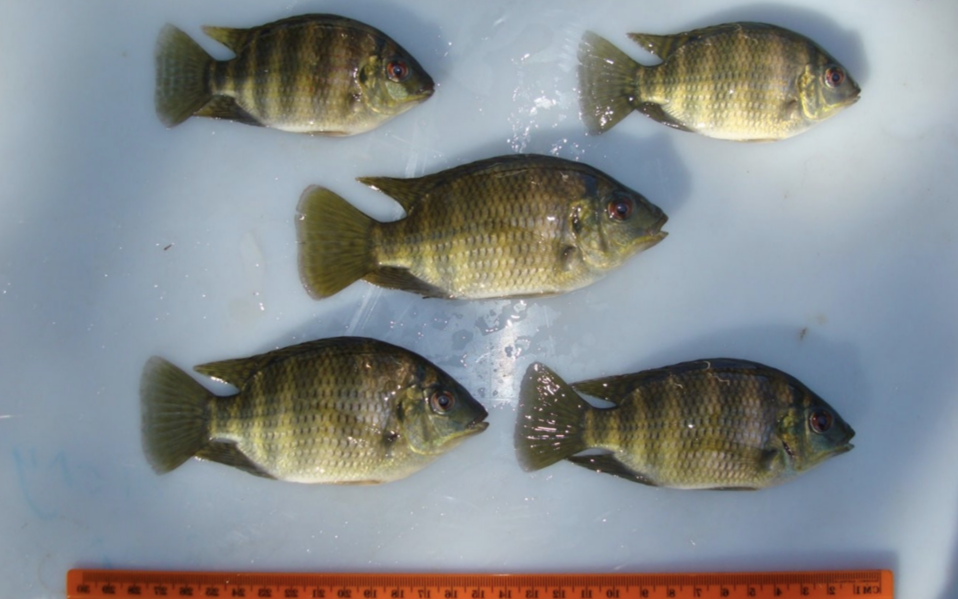
This fish is also a great eating fish, just like the Blue Tilapia, though they are a bit smaller. These fish were popular with aquarium enthusiasts and unfortunately, some people released them into the waterways when they didn’t want them any longer.
Best Bait For Spotted Tilapia
While I have less experience with this variety of Tilapia, they do share some characteristics with the Blue Tilapia. They lay their eggs on hard surfaces rather than building nests, but they also guard their young aggressively just like the Blue Tilapia do, so the lure trick will likely work for them as well.
However, others have also recommended bread as bait for the Spotted Tilapia, and I have gotten a few to bite on mealworms and crickets. Since these fish are smaller than the blues, the red worms may be a bit big for them.
How To Find Spotted Tilapia
Much like the Blue Tilapia, the Spotted variety prefers slow flowing canals, ponds, and lakes. Look for quiet, shallow areas, particularly off of larger waterways like rivers where fish would find viable spawning areas.
4.) Clown Knife Fish
The Clown Knife fish is a gargantuan and unique looking invasive species which was popular with aquarium hobbyists. Unfortunately, these people did not know just how big these fish got when they purchased them, which cause them to start releasing their pets into Florida waterways. The largest documented Clown knife was 31 inches in length and just under 10 pounds, making them a rather impressive catch.
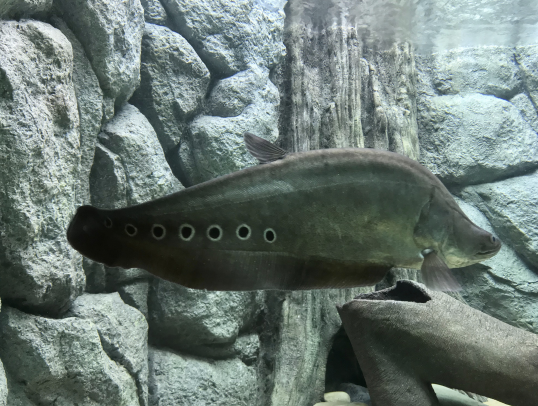
However, eating the Clown Knife is tricky. While the meat tastes pretty good, they are very bony. Though, in South East Asia where the fish is native it’s prepared and served in the form of fish cakes or balls rather than fillets. So, if you’re open to trying something new, it’ll definitely be an experience! Though most anglers catch them for sport in the Palm Beach and Broward county area.
Best Bait For Clown Knife Fish
The Clown Knife is a large predatory fish and so the very best bait for catching them will be live threadfin shad or other bait fish native to the area that they’ll be familiar with. However, lures will also work if they mimic these bait fish.
Keep in mind however that actually landing them is tricky. These fish can swim backwards, and netting them once they get close to shore or the boat is recommended to prevent them getting off the hook.
How To Find Clown Knife Fish
Clown Knifes tend to head for structures where they can hide and then ambush their prey. Seek out docks, bridges, downed trees, and other underwater structures where they might be hiding. Sight spotting can be helpful, but keep in mind that it’s much harder to find a Clown Knife than other invasive species. Their range is not as prominent and they are heavily targeted by sport fishermen already for their size.
5.) Bullseye Snakehead
This large fish is confined to the southern part of Florida, because temperatures above around 50 degrees are lethal for them. Anglers love these fish because of their size and the fact that they are challenging to catch.
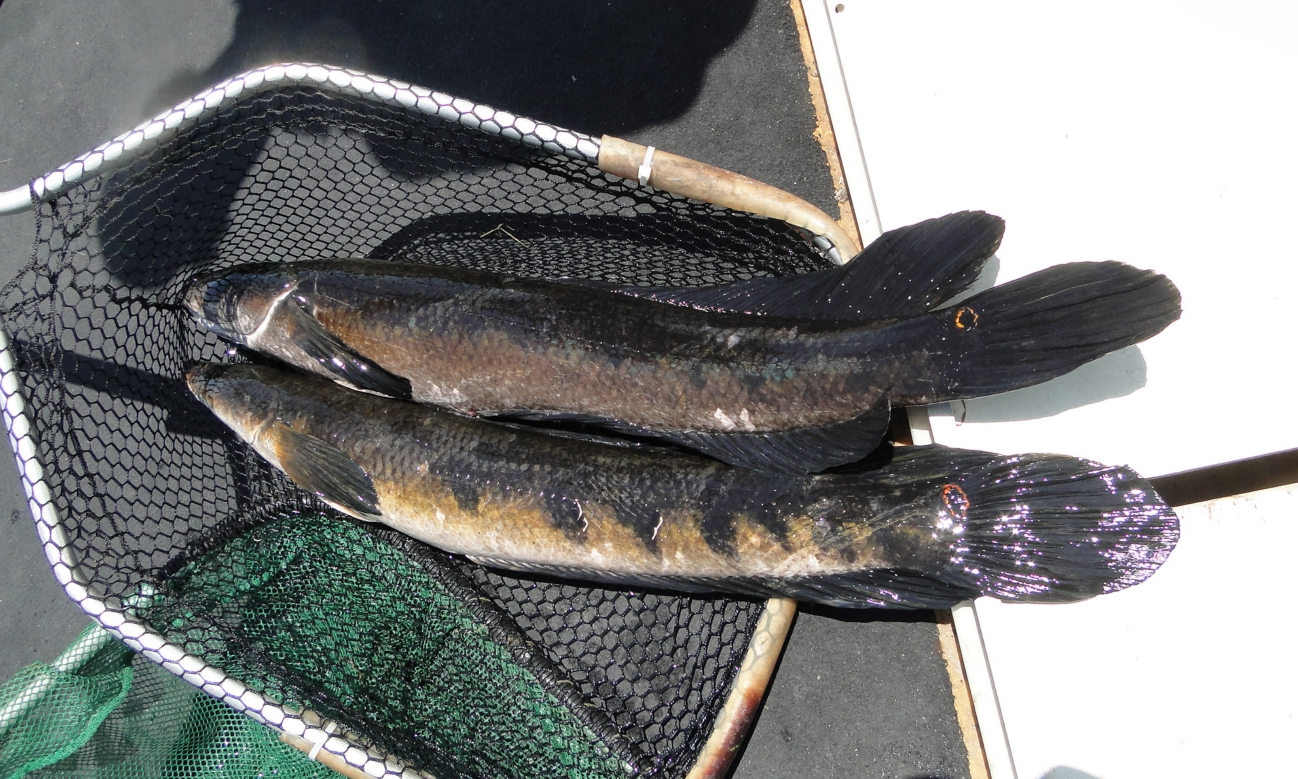
But, can you eat snakehead fish? The answer is, YES. The Bullsye Snakehead is actually excellent table fare. So, if you’re looking for a fish that’ll present a true challenge and pull double duty as dinner, you’re good to go here.
However, their range is not as extensive as some other invasive species and you may need to do a bit of web sleuthing to find a good spot to fish for them, but canals around Miami and West Palm Beach are a good start.
Best Bait For Snakehead
The Snakehead will eat a large variety of live prey which includes small fish, crayfish, lizards, turtles, and most other things that will fit in their mouths. Anglers also have successfully hooked them on jerk baits and soft plastics like frogs.
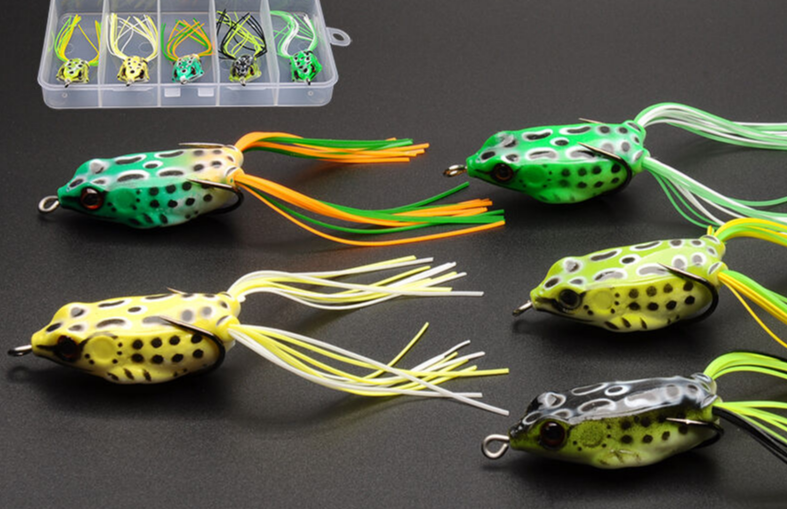
However, a wide variety of baits will work here and you don’t have to limit yourself to just those. The most important part of snakehead fishing is technique. These fish are easily spooked and you’ll need to fish smartly if you want to reel one in.
How To Find Bullseye Snakehead
The Bullseye Snakehead can be found up and down Florida canals in certain areas of the state. However, its range is not as far reaching as the Blue Tilapia or the Mayan Cichlid, and if you want to land one, then you should look around North Miami or West Palm Beach for the best chance of success.
Look for quiet canals with overhanging vegetation, dense underwater vegetation, or sunken structures which could help to hide a large, ambush predator.
You can fish for Snakehead at all hours, but they seem to venture out of their hiding spots a bit more at night. Patience is key here and noisy, impatient anglers who can’t sit still will be unlikely to land any Snakehead no matter what bait they are using.

